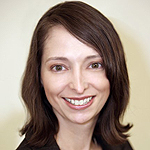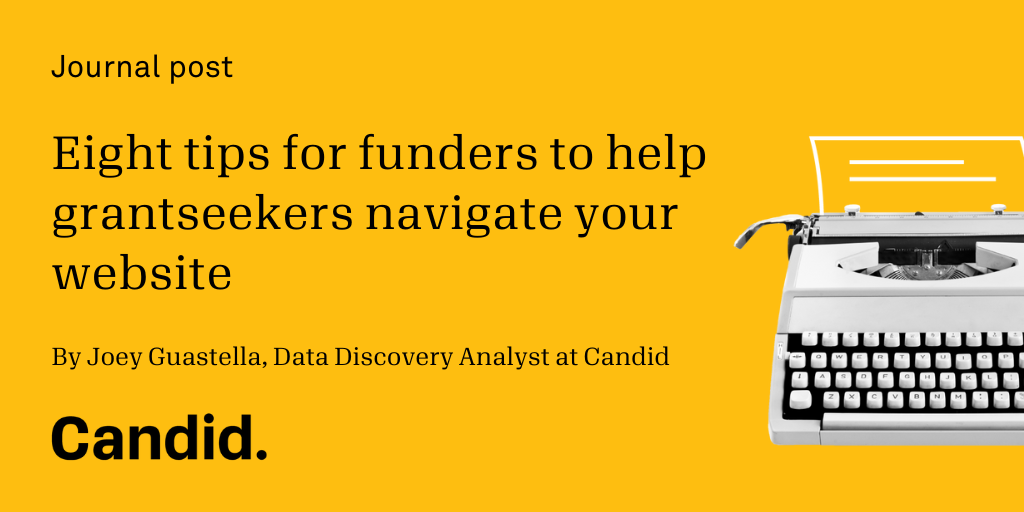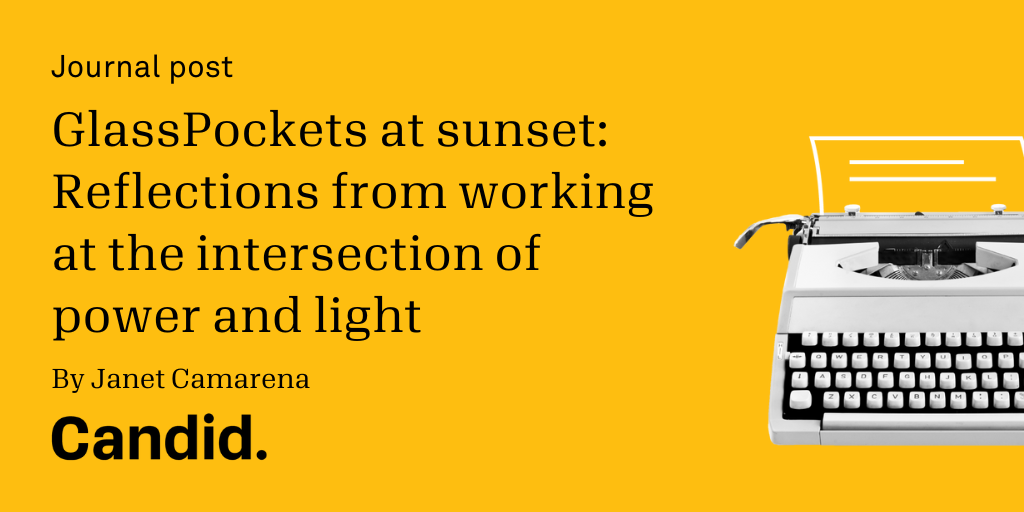Illuminating Philanthropy’s Role in Strengthening Democracy
Janet Camarena is director of transparency initiatives for Foundation Center.
This post is part of the GlassPockets’ Democracy Funding series, designed to spotlight knowledge about ways in which philanthropy is working to strengthen American democracy. The series will highlight new research and interviews with top democracy funders and recipients.
“Wherever the people are well informed they can be trusted with their own government.”
--extract from Thomas Jefferson to Richard Price, Jan. 8, 1789
Transparency and democracy are inextricably linked. Thomas Jefferson’s many quotable quotes, including the one above, emphasize the link between a well informed electorate and a healthy democracy. And some of the earliest forms of organized philanthropy in America, which funded libraries and universities, worked to fulfill this ideal of nurturing a well-informed populous by providing access to information and education. While the Founding Fathers wrote about the need for a literate population, they could not have imagined the digital literacy needed to navigate today’s information landscape. So, what does it mean to be a funder who wants to strengthen democracy in the present day? What are the tools, strategies, and funding trends across democracy funders? And what are they learning from their work?
To be able to answer these questions, in 2015, Foundation Center launched a free web portal, Foundation Funding for U.S. Democracy, containing grants data, statistical information, and grantmaker profiles. This portal continues to be updated as new grants data becomes available, and currently contains more than $4 billion in grants data awarded to related topics. And last week, IssueLab debuted a new related knowledge collection on American Democracy, which includes social sector research on election and campaign administration, voting access and participation, government performance and perceptions, and the role of media in civil society. As midterm elections are nearly upon us, we are certain this will be a valuable resource for democracy-related information backed by evidence and data.
It’s in this spirit that Transparency Talk turns its attention to a new series illuminating philanthropy’s role in strengthening democracy through the body of knowledge it has commissioned or produced on the topic. Between now and the November elections, we will be highlighting selected knowledge from the collection, as well as featuring interviews with top-ranked democracy funders. Below is our first “Staff Pick” from the American Democracy collection. It seems fitting to kick off the series with a look at how informed our electorate is when it comes to recognizing the difference between opinions and facts.
STAFF PICK
Distinguishing Between Factual and Opinion Statements in the News, by Amy Mitchell; Jeffrey Gottfried; Michael Barthel; Nami Sumida
PUBLISHER
Pew Research Center
FUNDERS
Ford Foundation; John S. and James L. Knight Foundation; Bill & Melinda Gates Foundation; Open Society Foundations; The Pew Charitable Trust; Knight Foundation's Trust, Media and Democracy initiative.
QUICK SUMMARY
In today's fast-paced and complex information environment, news consumers must make rapid-fire judgments about how to internalize news-related statements – statements that often come in snippets and through pathways that provide little context. A new Pew Research Center survey of 5,035 U.S. adults examines a basic step in that process: whether members of the public can recognize news as factual – something that's capable of being proved or disproved by objective evidence – or as an opinion that reflects the beliefs and values of whoever expressed it reveal even this basic task presents a challenge. The main portion of the study, conducted Feb. 22 and March 8, 2018, measured the public’s ability to distinguish between five factual statements and five opinion statements.
FIELD OF PRACTICE
Journalism & Media
WHAT MAKES IT STAND OUT?
Who doesn’t love a pop quiz? To make the survey come to life, readers can put themselves to the opinion vs. fact test. Try it here to test your ability to tell opinion from fact.
Beyond assessing your own abilities, there is much to be learned from the report itself about the forces shaping public perceptions, and raises the question about whether we are experiencing a new kind of literacy divide. The main portion of the study, which measured the public’s ability to distinguish between five factual statements and five opinion statements, found that a majority of Americans correctly identified at least three of the five statements in each set. Far fewer Americans got all five correct, and roughly a quarter got most or all wrong. The study also digs into the demographics behind the data to reveal that certain Americans do far better at parsing through this content than others. Those with high political awareness, those who are very digitally savvy and those who place high levels of trust in the news media are better able than others to accurately identify news-related statements as factual or opinion.
Republicans and Democrats found common ground in this study as participants who identified with one of these political parties were more likely to think news statements were factual when they appealed to their side – even if they were opinions.
Trust in those who do the reporting also matters in how factual statements are interpreted. Almost four out of ten Americans who have a lot of trust in the information from national news organizations (39%) correctly identified all five factual statements in the quiz, compared with 18% of those who have not much or no trust.
Also, reinforcing the idea that we are in a new phase of literacy in our evolution, digitally savvy Americans were found to be much more likely to correctly identify factual and opinion statements, with the divide between the very digitally savvy and those who are not savvy standing out as “particularly stark.” The level of digital savviness was based on frequency of internet use and confidence in using digital devices. About three times as many very digitally savvy (35%) as not savvy Americans (13%) classified all five factual statements correctly, with the somewhat savvy falling in between (20%). And about twice as many classified all five opinion statements correctly (44% of the very digitally savvy versus 21% of the not digitally savvy).
KEY QUOTE
“At this point, then, the U.S. is not completely detached from what is factual and what is not. But with the vast majority of Americans getting at least some news online, gaps across population groups in the ability to sort news correctly raise caution. Amid the massive array of content that flows through the digital space hourly, the brief dips into and out of news and the country’s heightened political divisiveness, the ability and motivation to quickly sort news correctly is all the more critical.”
If your organization commissions or produces related literature, we welcome you to add to our collection here.
--Janet Camarena




